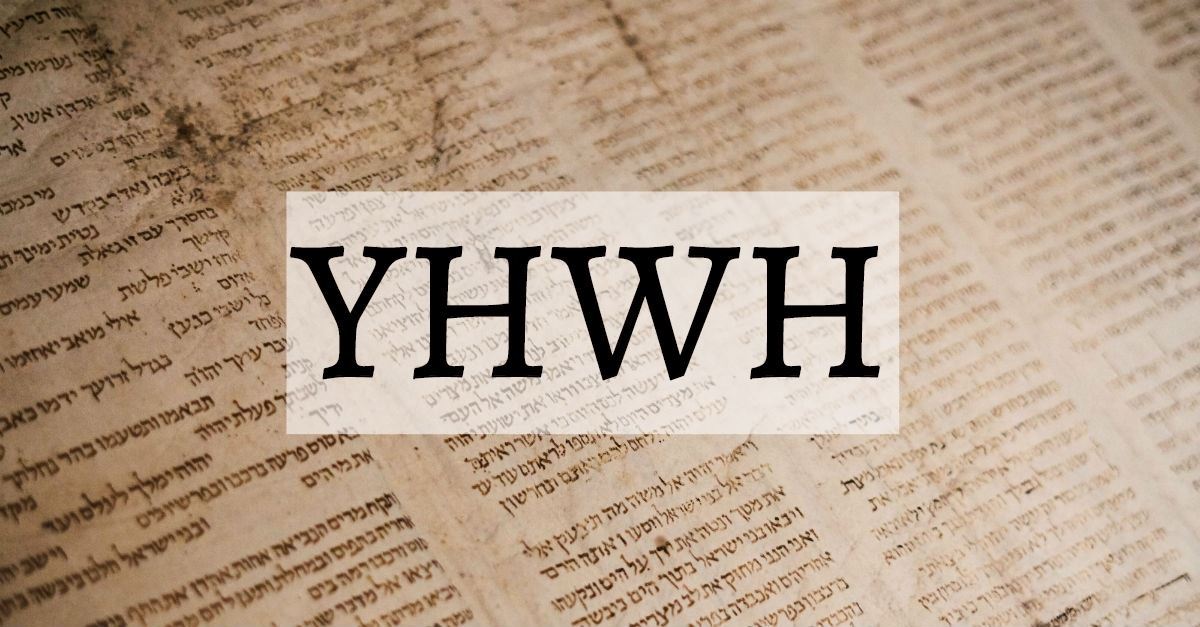
...........................................................................................................................................................
The
Tetragrammaton
What Is the Tetragrammaton? Meaning
and Usage
The Tetragrammaton is the combination of four Hebrew letters to
form the ancient Hebrew name of God, YHWH. This name demonstrates God’s
self-existence and self-sufficiency and is linked to how God described himself
to Moses.
Alyssa Roat
Throughout history, the Bible has been
translated into dozens of languages. As a result, God has acquired a number of
names: Dios, Apajui, God, Enkai, Dieu, Gott,
and so on.
However, the Torah,
written in Hebrew, did have a specific name for God. This name, YHWH, is known
as the Tetragrammaton.
Tetragrammaton in the Torah and the Bible
Though it is uncertain whether this name of God was used
previously, most scholars point to YHWH first appearing in the Bible when God
manifests Himself to Moses in the burning bush (Exodus 3).
In Exodus
3:14, “God said to Moses, ‘I AM WHO I AM. This is what you are to say to
the Israelites: “I AM has sent me to you.”’”
This I AM is understood to be YHWH, and could alternatively be
translated as something along the lines of “He Who Is” or “He who
brings being into being.”
“YHWH” is formed from the four Hebrew letters yodh/yud, he/hey, waw/vav,
and he/hey.
It is called the Tetragrammaton, literally
meaning “four letters,” because of this.
Tetragrammaton Pronunciation
In written form, ancient Hebrew was a consonant-only language
without any vowels, thus leading to the name of God being spelled “YHWH.”
Because of this, the word itself gives no indication of actual
pronunciation.
This issue is compounded because of a Jewish taboo on speaking
God’s name.
Instead, the name HaShem (literally,
“the Name”), would be used, or names such as Adonai (Lord) or Elohim (supreme
one).
The origin of the taboo is uncertain, perhaps stemming from fear
of taking His name in vain, but as a result, the pronunciation was lost, and
neither Jewish nor Christian scholars are sure how it was pronounced, or even
how many syllables it had.
The most likely
pronunciation is Yahweh, pronounced “YAH-way” or “YAH-weh.”
History of Tetragrammaton Usage
Though the pronunciation of YHWH would have originally been known,
after the Babylonian
Exile in the 6th century B.C., the Jews began to
use the name Elohim more than YHWH.
This is potentially for two reasons, one
being that Elohim was a more universal name as Judaism spread, and the other
being that the divine name was increasingly considered too sacred to be
uttered. It was replaced vocally in synagogues as Adonai.
In the 6th through 10th centuries,
the Masoretes, who worked to reproduce the original Hebrew text of the Bible,
inserted the vowels from Adonai or Elohim into YHWH to get YeHoWeh or YeHoWaH.
However, “Y” doesn’t exist in Latin, so Latin-speaking Christian
scholars replaced the “Y” with “I” or “J” to get “JeHoWaH,” which
became “Jehovah” as it spread throughout medieval Europe.
Christian scholars continued to refer to the Tetragrammaton as
Jehovah until 19th and 20th century scholars
returned to “Yahweh,” a form of which dated back to early Christian writers
such as the 2nd century Clement
of Alexandria.
YHWH Translations in English
In English translations of the Bible, the Tetragrammaton is
usually rendered LORD, with the word “Lord” in small capital letters, though it
is sometimes rendered “Yahweh” or “Jehovah,” leading some to believe that
Jehovah is the Divine Name revealed to the Israelites and thus is the correct
or true name of God.
This is not the case, as has been shown, as Jehovah evolved from a
continued mixing of words, alphabets, and languages, not emerging
until around the 16th century.
Tetragrammaton Meaning
YHWH can be interpreted in multiple ways, from “He who will be,
is, and has been” to “He Who
Is” to “He
Brings into Existence Whatever Exists” to simply “I
Am.”
It is perhaps this multiplicity yet cohesion of meanings that most
powerfully points to who God is.
God is the unchanging, everlasting, all-powerful, undefinable
Creator of all.
We have so many names for Him, from the Almighty, to Father, to
the Lord of Hosts, but none can truly sum Him up.
Thus, when asked to name Himself, God simply
replies, “YHWH” — “I Am.”
Alyssa Roat is a literary agent at C.Y.L.E., a professional writing major
at Taylor
University, and a freelance editor with Sherpa Editing Services. Her
passions for Biblical study and creativity collide in her writing. More than a
hundred of her works have been featured in publications ranging from The
Christian Communicator to Keys for Kids.Find out more about her here and on social media @alyssawrote.

No comments:
Post a Comment